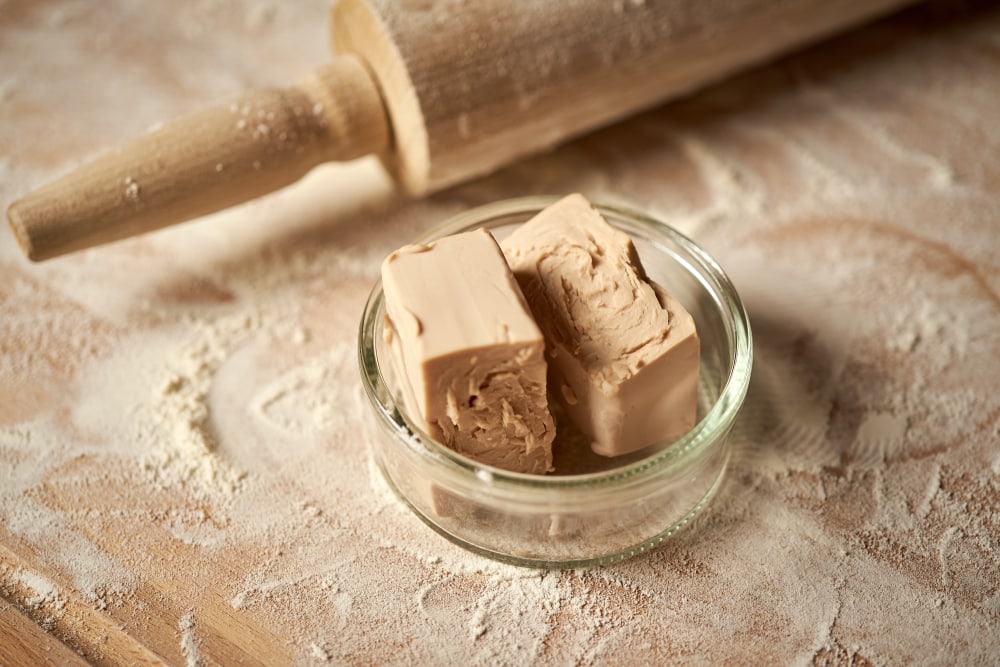
Yeast is one of the most important ingredients for pizza dough as it is a leavening agent. In particular, yeast helps raise the pizza dough and pizzas need a dough that rises quickly to make sure the crust comes out bubbly and airy. However, which type of yeast you use can directly impact the texture and flavor of the pizza. For this reason, we have fresh yeast vs dry yeast pizza comparison, so you can select the yeast that promises the best flavor!
Fresh Yeast vs Dry Yeast Pizza
Understanding The Function Of Yeast
When it comes down to yeast, it’s an important part of the fungus family and works quite fascinatingly. For instance, it produced carbon dioxide in other ingredients of the yeast, which produces air pockets. When the dough is baked, the heat will kill the yeast, which means the air pockets will be trapped in the dough, resulting in a fluffy and airy crust. So, let’s see how these two types of yeast differ from each other!
Dry Yeast
Dry yeast is basically dried-out yeast and it’s done to increase the lifespan and shelf stability of the yeast. Usually, the yeast has to be dissolved in water before it is added to the recipe. However, dry yeast is extremely convenient and easy to use. Dry yeast has the texture of cornmeal or sand. The dry yeast remains safe for usage for several months if you store it at room temperature.
When it comes down to the usage, the dry yeast needs blooming or proofing before it is added to the dough. For this purpose, you have to add the yeast granules to warm water and whisk them until small bubbles start appearing. The dry yeast tends to kill approximately 1/4th of the yeast cells, which slows down the fermentation process and produces a yeast-like flavor.
It is available in granulated and dried form and is widely available in grocery stores in glass jars or packets. The store-bought dry yeast has a longer lifespan. For the most part, it has a cornmeal and sandy texture, which actually mellows down the flavor.
Fresh Yeast
Fresh yeast is commonly used yeast in pizza and is usually available in compressed form. The fresh yeast has a crumbly and moist consistency. In most cases, it looks like a block of cheese but the shelf life is pretty limited. This is because the fresh yeast has to be used within one to two weeks and make sure that you store it in the refrigerator.
Using fresh yeast is pretty easy as you don’t need to perform the blooming process (you don’t need to whisk it in warm water). The fresh yeast tends to have a higher count of living yeast cells, which means it needs more CO2, promising a faster and bigger rise. Keep in mind that finding fresh yeast can be challenging and it’s more expensive (you will find it in specialty stores).
It is one of the liveliest forms of yeast and it’s recommended to use it with a sourdough starter. To use this yeast, you can dissolve it in water or crumble it with other dry ingredients of the pizza dough. It is likely to have 70% moisture and pale beige color. In addition, the texture is crumbly and soft while the fresh nature results in a more pungent flavor.
Additional Factors To Remember
Now that you understand the differences between dry yeast and fresh yeast and how they impact the pizza dough, it’s also important to understand the substitution ratio. Having said that, for one tablespoon of fresh yeast, you can use 1.5 teaspoons of dry yeast (you can also opt for a 2:1 substitution ratio). On the other hand, if you are worried about choosing the right type of yeast, it’s nothing to be worried about because all you’ve to do is to use the correct quantity of yeast and make sure the water is between 95 degrees Fahrenheit and 100-degrees Fahrenheit.
Which Is The Right Yeast To Use?
There is no right and wrong when it comes down to yeast as it entirely depends on the flavor you want. Fresh yeast tends to create a sweeter flavor as compared to dry yeast. However, many people cannot even differentiate the flavor, so use the yeast that’s readily available to you!